Experienced gardeners and gardeners know whether they need to dig land in the garden in the fall: the rules of digging. Work on the ground requires a responsible approach, and before deciding how to cultivate the soil, you should find out the advantages and disadvantages of this method. Thanks to digging, the soil can be filled with mineral, organic fertilizers, and loosened. In the process, weeds are removed. There are also opponents of digging up the garden. Their arguments should also be considered.
Content
- 1 Digging for the winter
- 2 What gives cultivation in the fall
- 3 Soil type
- 4 When to dig a garden in the fall
- 5 How to dig better
- 6 Mineral fertilization in the fall
- 7 Do I need to dig the earth in the greenhouse in autumn
- 8 When to plow a garden: in spring or autumn
- 9 Tips for beginner gardeners
- 10 The bottom line: dig or not dig
Digging for the winter
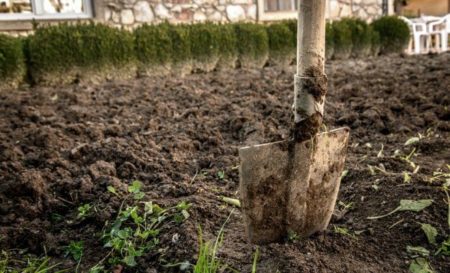
Digging in the autumn garden for the coming winter is a must. This procedure is necessary for soil preparation. In the autumn season, during the period of digging, the ideal fertilizer period manure, composts and humus. Also on farms where planted crops are regularly hit by the Colorado potato beetle, the bear, wireworm and other varieties of pests digging the ground will be relevant. The procedure allows you to destroy the larvae hidden in the soil. To do this, plow the earth to a depth of 25 cm.
What gives cultivation in the fall
Each gardener, gardener has a separate opinion on whether to dig his garden in the fall. Not everyone knows what the digging of the land is for. Some refuse this procedure, while others, on the contrary, completely process their land. You must first study the advantages and disadvantages of this procedure, and then decide whether to dig the earth in the autumn in your garden. Tips from experienced gardeners will help you deal with the intricacies of digging.
Pros and cons of digging
The main advantage of the procedure is the ability to cultivate the site, enrich it with mineral, organic substances, loosen the soil. In addition, this is an excellent method of weed control, which germinates well in the warm autumn. We must not forget about the disadvantages of plowing. The procedure is quite difficult, it takes a lot of time and effort. There is no need to dig in areas where this is not required.
A large number of worms, spiders, various microorganisms and fungi live in the earth. Under a microscope, even a small piece can be seen billions of living microorganisms. They live at different depths. During the opening and turning of the soil, local residents change places, some die.
Weed control
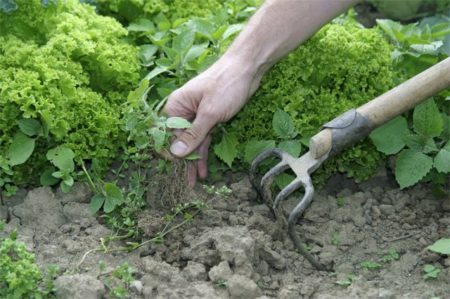
Weed control with weeding even in a small area requires a lot of time. Digging fertile land helps fight weeds effectively. However, it should be borne in mind that it will not work out completely, but plowing the plot will significantly weaken the development of the weed.
In addition, in addition to weed seeds, fungi and other pathogenic bacteria that infect crops grown in the garden will be on the soil surface.Since cooling starts in the fall, all microorganisms will die at low temperatures. Therefore, digging the earth in the garden is the best way to disinfect it.
Fertilizing and deoxidizing the soil
The enrichment of the soil with nutrients and the deoxidation procedure require its mixing. This can only be done by digging the ground. It is better to spread ash into the soil, to fight weeds and their seeds with a shovel. Only a shovel provides high-quality processing of the land, of course, if it does not occupy a large territory. In other cases, you will have to spend money on shovels, plow through the equipment adapted for this.
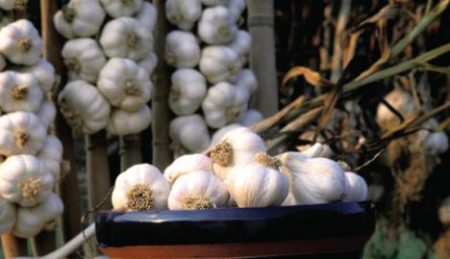 You may be interested in:
You may be interested in:Do I need a dig in the garden
Plowing your garden in the fall is necessary, but resorting to such a procedure on the garden site is necessary with utmost care. Many gardeners mistakenly plow a tree trunk around with a shovel, because this is the most dangerous procedure for him. It contributes to the destruction of the smallest roots. Therefore, digging up the garden for the coming winter is not recommended. You can only loosen the surface with a chopper.
Soil type
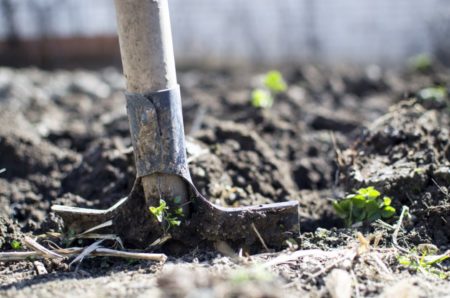
Before digging your garden in the fall, it is important to consider its features:
- Without treatment it is impossible to leave clay, loamy areas, as well as land with a close location of groundwater. The excavated area, each pore and hole will be filled with oxygen. This will help double the amount of soil. Enriched with oxygen and carbon dioxide, the earth quickly copes with decaying plants, useful humus is formed. After planting in the spring of plants, they will be more resistant to frost, drought, their root system can penetrate into the deep layers of the soil.
- If the earth is light, loose, saturated with humus, it is better to loosen it with sand, but do not dig it up. Digging is necessary only in areas contaminated with weeds. You can’t resort to a deep plow regularly, since the procedure negatively affects the structure of the soil.
Plowing should be done before the onset of cold weather, and the appearance of the first snow. If it is plowed together with the earth, the process of heating the soil in the spring will significantly slow down. You also need to catch up to the rainy season, otherwise the top layer will become too dense.
When to dig a garden in the fall
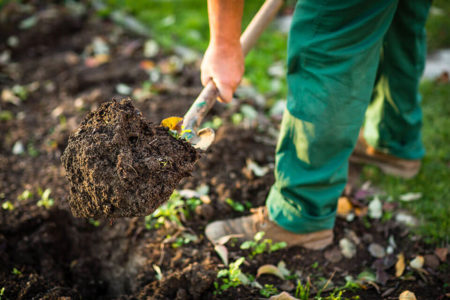
It is necessary to start plowing the land before the cold snap, usually this is done immediately after harvesting the crops grown. Soil fertilization during this period has an impact on next year's yield. Spring plowing is in no way able to replace autumn plowing. It should end before the rainy season, since after them it will be impossible to loosen the soil, especially if it is a clay section. The ideal period to start digging is the end of September and the beginning of October.
First, it is better to use a rake and slightly loosen the soil after harvesting the previous crop. This will trigger weed germination. After a couple of weeks, all the seeds will germinate and you can proceed to the usual digging with a shovel. If you skip the deep plow, then the weeds will still have to be removed, only this will require more effort.
How to dig better
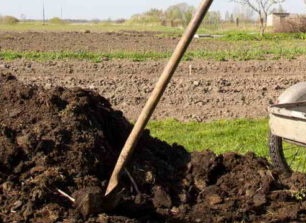
The method of digging directly depends on the crop grown next year. For carrots, potatoes, beets, melons, pumpkins and parsley, you need to dig about 30 cm. In areas for tomato, pepper, legumes, cucumbers and radishes, a depth of not more than 10 cm is enough.
It is better to simply shift the soil rather than turn over the soil - this allows you to save the local microflora. Discovered weed roots should be removed immediately, in no case should they be buried. Rocky, solid soil is dug up onto two bayonets of a shovel, turning the soil over - the method is used in extreme cases.
For digging, you can use:
- in a small area you can use a shovel. It is suitable for all types of soil, but requires a lot of effort and time;
- pitchforks are suitable for obtaining a soft structure, which is considered the best for young crops;
- the cultivator allows you to quickly loosen the site, to destroy weeds.
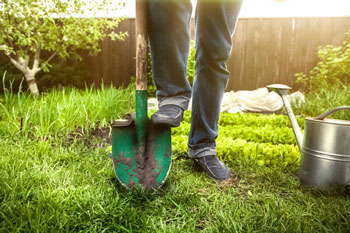 You may be interested in:
You may be interested in:Processing a section with a walk-behind tractor
Using a walk-behind tractor, it is recommended to replace the cutter with a tool with a wedge-shaped, oval or flat edge. Large clumps will remain on the cultivated land, they cannot be destroyed - after the start of rains the necessary saturation with moisture, oxygen will not occur. In addition, large blocks help to keep snow. Inverted soil is saturated with nutrients, which favorably affects future productivity.
Processing plots with trees
Digging near trees should be done as carefully as possible so as not to damage the small roots. From them grow new seedlings. Loosening the earth is better in the last days of September. The digging depth should not exceed 15 cm. The treated area should be sprinkled with mulch, dry foliage, protecting the root system from freezing.
Mineral fertilization in the fall
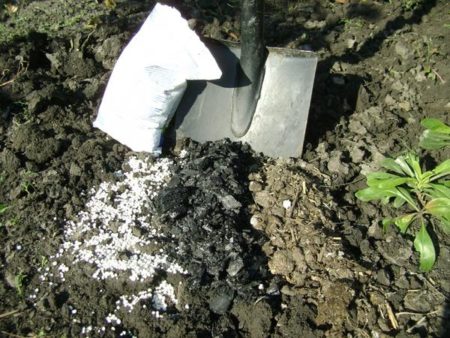
Gardeners, when they begin to dig sites, make fertilizers. Organic matter must be distributed in the beds, where it is planned to grow cabbage, cucumbers and seedlings. The amount of fertilizer should not exceed 1 bucket per square meter. m. Compost, manure is used. Fertilizers of mineral origin are allowed for all crops. The soil for mineral compositions must be dug up by at least 20 cm. Liming is carried out if the soil is acidic.
Not everyone succeeds in completing all the work before the first cold weather. After harvesting cabbage, parsnips or celery, the tops do not need to be taken out of the garden, it is worth chopping it finely with a shovel and dig it in. This will become an organic humus, which will be useful to plants in the spring.
Do I need to dig the earth in the greenhouse in autumn
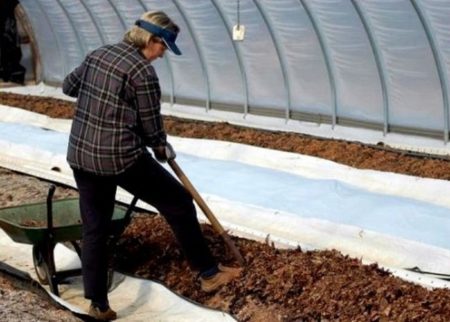
Experienced gardeners advise every year to completely replace the layer of fruiting soil. To do this, the upper part of 10-15 cm must be removed and a new earth brought in. Not everyone understands why this needs to be done. So, it will be possible to increase productivity, reduce the risk of developing diseases of the soil and plants. Even with the understanding of the importance of soil replacement, not everything can be done. In this case, digging the beds becomes the best option. It is necessary to carefully select all the remaining plant roots that occur in insect larvae.
During the same period, gardeners prefer to fertilize. Its type depends on the plants that will be grown in the greenhouse. More commonly used:
- manure;
- ash;
- compost;
- humus.
To improve the fertility of the soil and its structure, gardeners planted mustard in the greenhouse after removing the entire crop. It not only allows you to increase the productivity indicators of other crops, but also effectively copes with the harmful microflora that is in the soil.
When to plow a garden: in spring or autumn
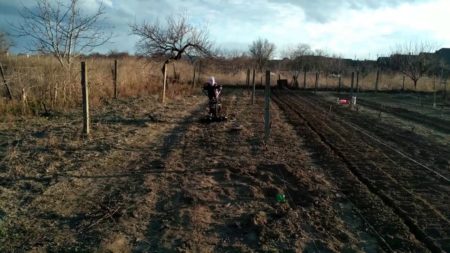
Gardeners have differing opinions about when it is better to dig beds. Experienced specialists explain why this procedure should be carried out in the autumn. This will greatly benefit the soil.Digging beds is necessary in those areas where the soil itself is bad. When the soil turns over, weeds freeze over the winter, pathogens die, which lead to diseases of crops grown in the garden. Annual digging in the autumn months will increase productivity, the number of problems during its cultivation will decrease.
If it was not possible to dig a garden in the fall, you can do it after the snow has completely melted and the ground will become soft, ready for the upcoming loosening. It is carried out taking into account a number of rules:
- the soil should not be frozen;
- dig the site with furrows;
- during loosening, lumps must be carefully broken;
- in the spring to process the garden is best with a shovel. It will help to well loosen the soil and break up the forming lumps.
Tips for beginner gardeners
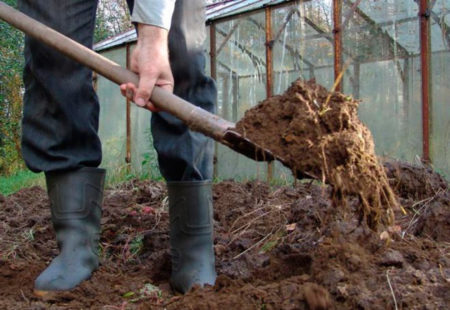
People who constantly work on the ground know that the annual digging of the soil to the same depth leads to the formation of a densified lower layer. To avoid this, once every 4-6 years, you need to carry out a 2-level digging of the soil.
- It is necessary to dig the shovel's bayonet to the full depth and return the raised earth to the pit.
- This will saturate the soil with the necessary substances.
- Weed seeds will spawn before spring.
- The land needs to be well cultivated. Do not dig too wet or dry soil.
- The shovel should be kept upright, picking up a small amount of soil.
In autumn, the garden needs to be dug up with 40-cm furrows. First you need to cover the soil with compost, manure. First, the first furrow is dug, followed by the second, which digs it. So, all the nutrients will be in the ground. Organic fertilizers can be added to the dug furrows.
The bottom line: dig or not dig
Digging the soil allows you to destroy weeds, evenly distribute the fertilizers that have been applied. In the process, pests, underground rodent burrows will be destroyed. This helps to increase the yield in the garden. You can choose manual or mechanical processing of the site. In order for the digging to be successful and go for the benefit of the earth, it is worth taking the advice of specialists and experienced gardeners.

 How to decorate and highlight garden paths in an original way?
How to decorate and highlight garden paths in an original way?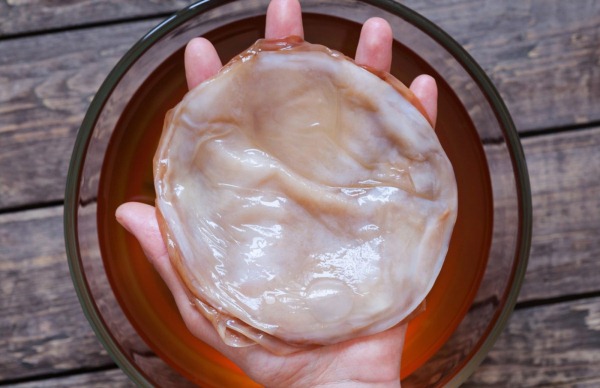 How to grow Kombucha "from scratch"?
How to grow Kombucha "from scratch"?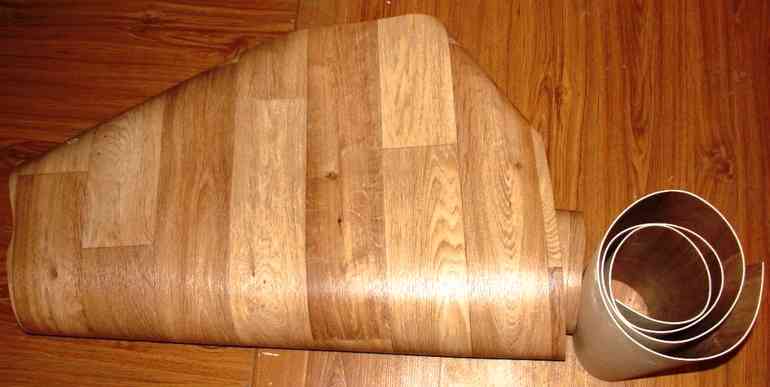 8 practical ideas for using linoleum in the garden
8 practical ideas for using linoleum in the garden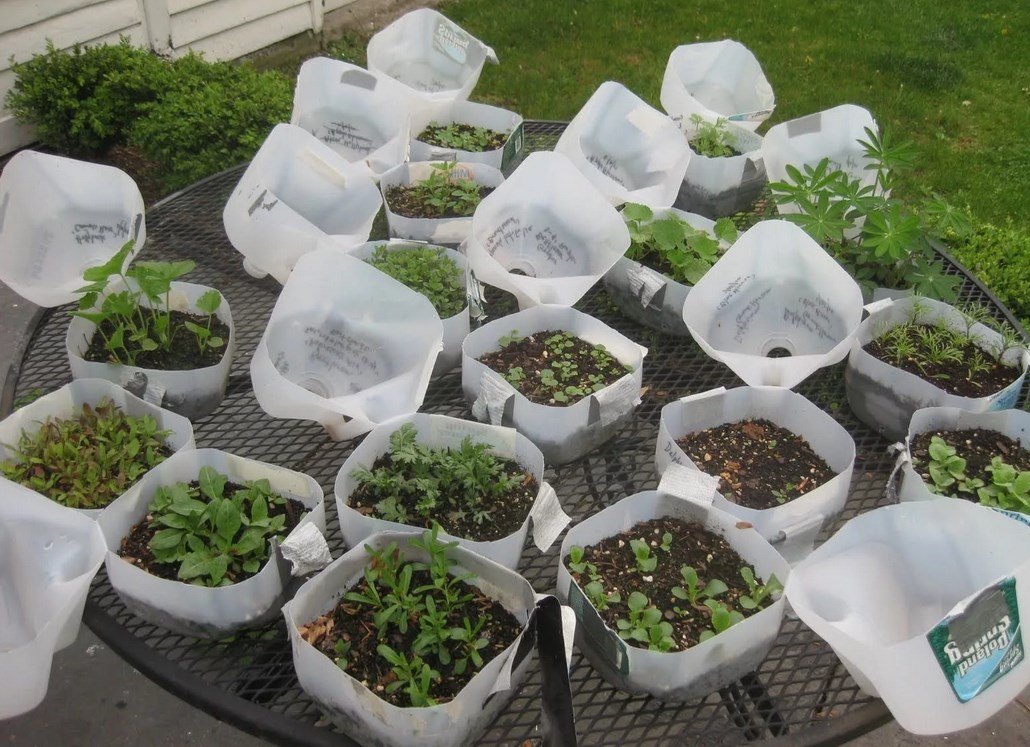 Useful crafts from do-it-yourself canisters for the garden
Useful crafts from do-it-yourself canisters for the garden